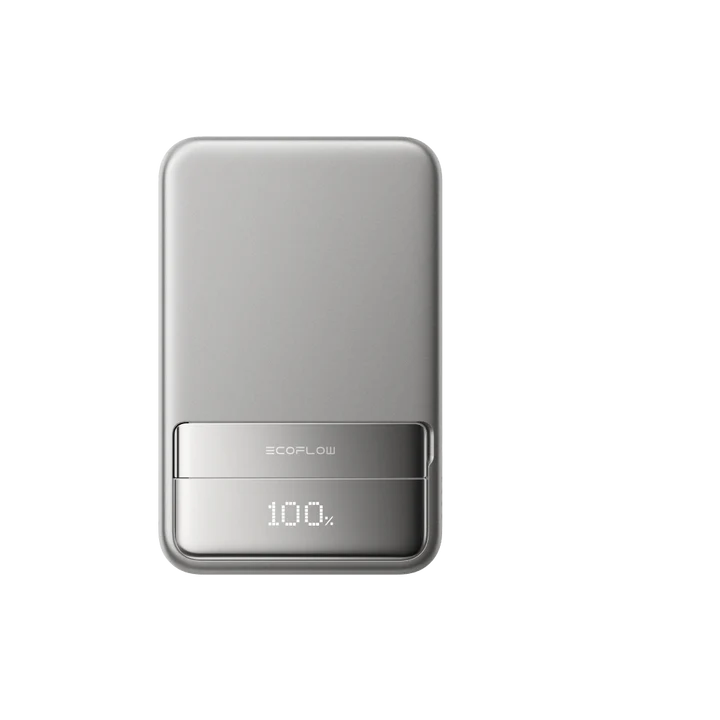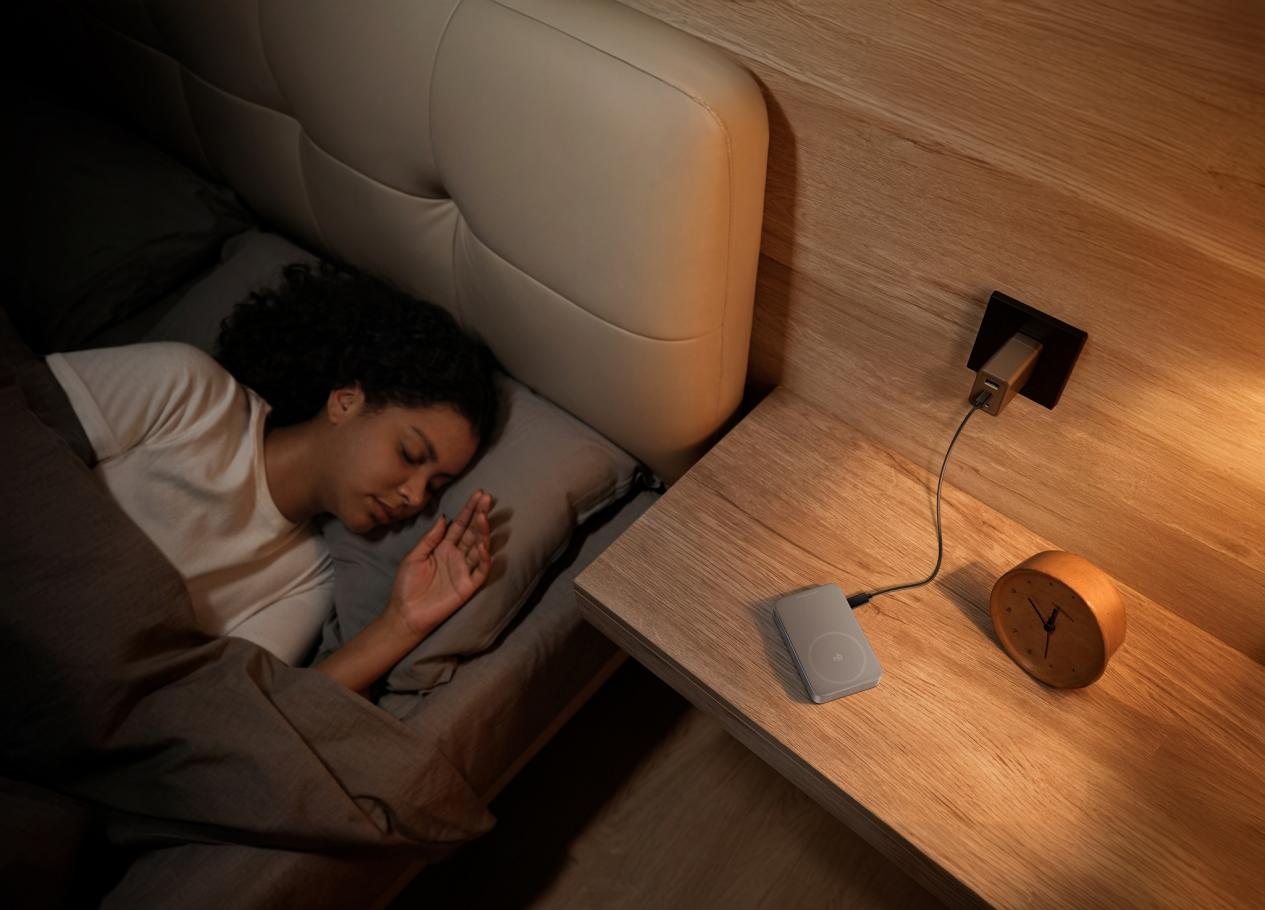Which Is Better, 10000mAh or 20000mAh?
Which Power Bank to Choose, 10000mAh or 20000mAh?
The choice between a 10,000mAh and a 20,000mAh power bank boils down to a fundamental preference. There is no universally "better" option; the superior choice is the one that aligns seamlessly with your individual requirements.
Go with 10,000mAh for Portability and Daily Use
A 10,000mAh power bank is all about convenience. Choose this size if your main goal is to have a lightweight, compact charger for everyday use or emergencies. It’s designed to provide one or two full charges for most smartphones, giving you a reliable power boost without weighing down your pocket or bag. This makes it the perfect companion for daily commutes, short trips, and long days when you know you'll be away from a wall outlet.
Go with 20,000mAh for High Capacity and Travel
A 20,000mAh power bank is for anyone who needs more power. This is the right choice if you have to charge multiple devices at once, keep a single device running for several days, or power more energy-intensive electronics like a tablet or a compatible laptop. The trade-off for this large power reserve is a noticeable increase in both size and weight. It's built for frequent travelers, power users, campers, and anyone who can't risk running out of battery.
For those who need even more capacity, the EcoFlow RAPID Pro Power Bank (20,000mAh, 230W, 100W Built-in Cable) offers exceptional performance with its high-wattage output and convenient built-in cable design.
EcoFlow RAPID Pro Power Bank (20,000mAh, 230W, 100W Built-in Cable)
What "mAh" Means for You
The "mAh" (milliamp-hour) on a power bank represents its total battery capacity—you can think of it like the size of a gas tank. However, this advertised capacity isn't the same as the amount of power you can actually transfer to your phone. During the charging process, some energy is always lost due to voltage conversion and heat.
A reliable rule of thumb is that the usable power you get is about 60% to 70% of the advertised capacity.
A 10,000mAh power bank actually delivers about 6,000 to 7,000mAh of charge.
A 20,000mAh power bank actually delivers about 12,000 to 14,000mAh of charge.
To calculate what this means for your device, you just need to know its battery size. For example, a Samsung Galaxy S24 Ultra has a 5,000mAh battery, and an iPhone 15 Pro Max's battery is around 4,400mAh.
With that effective capacity in mind, a 10,000mAh model will reliably give a modern smartphone 1.5 to 2 full charges. The larger 20,000mAh model will provide 3 to 4 full charges and has enough power to fully charge a tablet.
10000mAh or 20000mAh: Head-to-Head Comparison
Beyond the raw numbers, several key differences influence which power bank is the right tool for the job.
Capacity & Power: The Day Tripper vs. The Weekender
This is the most straightforward distinction. The 10,000mAh unit is the quintessential Day Tripper. It’s perfect for ensuring your phone survives a long day of use, navigating you home, and keeping you connected. The 20,000mAh model is the Weekender or Workhorse. Its substantial capacity makes it ideal for multi-day trips, long-haul flights, camping excursions, or for professionals who depend on multiple electronic devices throughout their workday.
Size & Portability: The Biggest Trade-off
Herein lies the most significant compromise.
- 10,000mAh Power Banks: These are designed for convenience. Often similar in size to a deck of cards or a compact smartphone, they weigh between 180 and 250 grams (6-9 oz). Their portability is excellent, fitting comfortably into a pocket, a small purse, or a clutch without being cumbersome.
- 20,000mAh Power Banks: These units prioritize power over pocketability. They are substantially thicker and larger, frequently compared to two smartphones stacked together. Their weight is also considerably higher, typically ranging from 350 to 500 grams (12-18 oz). While still portable, they are best transported in a backpack, briefcase, or a large handbag; carrying one in a pocket is generally uncomfortable and impractical.


Airline Travel Regulations
For air travel, the governing metric is Watt-hours (Wh), not mAh. The Transportation Security Administration (TSA) and Federal Aviation Administration (FAA) limit power banks in carry-on luggage to 100Wh without needing special airline approval.
A 10,000mAh power bank (at a standard 3.7V) equals about 37Wh, placing it well under the limit.
A 20,000mAh power bank is typically around 74Wh, also safely below the 100Wh restriction.
The most important rule is that power banks of any size are strictly prohibited in checked luggage due to fire safety regulations. They must always be carried with you in the cabin.
Price and Value
Generally, 10,000mAh power banks are more affordable, making them an excellent entry-level choice or a great secondary, more portable option. While 20,000mAh models have a higher initial cost, they often represent better value in terms of cost-per-mAh, giving you more charging capability for your money.
Who Needs Which? A Scenario Guide
The best way to decide is to consider your typical day or planned activities.
The Daily Commuter or Student:
Your primary need is a safety net to prevent a dead phone battery on the trip home from the office or campus. A 10,000mAh model is perfect. It provides more than enough power for this purpose without adding burdensome weight to a bag you carry every day.
The Frequent Traveler or Business Professional:
Your wants and needs are stronger. During long trips, layovers, and meetings right after each other, you need to keep your phone, maybe a tablet, or noise-canceling headphones charged. The 20,000mAh selection is the better one in this case. Having a lot of power gives you peace of mind that is worth the trouble of its extra bulk.
The Outdoor Enthusiast or Camper:
Capacity is king when you're away from people. Things like a phone, a GPS, or a rechargeable light need to stay charged for the whole weekend. For any trip away from the power grid, a 20,000mAh power bank is the best choice.
The Family on Vacation:
It can be hard to keep all of your devices charged at the same time, like your phones, your kids' tablets, and handheld game systems like the Nintendo Switch. A 20,000mAh power bank can be used as a central charging hub to avoid arguments over hotel rooms or cars that don't have enough power outlets.
The Tech Enthusiast with a USB-C Laptop:
At the very least, you'll need a 20,000mAh power bank to increase the battery life of a compatible laptop like a MacBook Air or Dell XPS. To charge a laptop properly, you must make sure it has a Power Delivery (PD) port with a high power (at least 45W). A 10,000mAh unit doesn't have enough power or storage for this job.
Beyond mAh: Other Essential Power Bank Features
Capacity is only one part of the story. The first step is to decide between 10,000mAh and 20,000mAh. The power bank's ports, charging speed, and how it recharges itself are all important factors that affect how well and how easily it works in real life.
Output Ports
Check the type and amount of ports to see how many things you can charge at the same time. The older, rectangle USB-A ports and the newer, oval USB-C ports should both be on a power bank that can be used for many things.
Charging Speed
If it takes a long time to charge, having a lot of space doesn't mean much. Check for Power Delivery (PD), which is the new way to charge phones, tablets, and even computers quickly with a USB-C cable. This trait should be seen as necessary. Another popular protocol is Quick Charge (QC), which is mostly used for Android phones.
Input Port (How it Recharges)
You can charge the power bank itself through the input port. The plug on a current power bank should be USB-C. The new standard lets the unit charge much faster than the old micro-USB one. This is especially important for a 20,000mAh model that has a lot of power.
Fortify Your Power Strategy!
Bring your power bank with you when you need it. It works best that way. If you leave your 20,000mAh giant at home because it was too heavy to carry, it's not useful. You might want to start with a 10,000mAh type if you're not sure. It is small enough to carry around and powerful enough for most situations. For many people, the best answer is to have two batteries: a sleek 10,000mAh for daily tasks and a strong 20,000mAh for trips and busy days.


FAQs About Power Banks
Q1: How long does a power bank last before I need to replace it?
Usually, a good power bank can be charged 300 to 500 times. From 0% to 100%, one turn is a full charge. Like all batteries, its greatest capacity will slowly go down over time. For most people, this means that a good power bank should work well for at least two to three years before you might need to get a new one. Correct use can extend the life of the power bank.
Q2: Is it safe to use my phone while it's charging from a power bank?
Yes, it is safe to use your phone while it is plugged into a power bank. Just keep in mind that your phone will charge more slowly because the power is being split between charging the battery and running the device. You can expect both the power bank and your phone to get a little warm, but not enough to be uncomfortable.
Q3: How long will it take to recharge my power bank?
This varies on how big the power bank is and what kind of wall charger you use. Most of the time, a current USB-C Power Delivery (PD) charger can charge a 10,000mAh power bank in three to four hours. If you use the same kind of fast charger, it will take longer for a 20,000mAh model ($6 to 8 hours). These times can get a lot longer if you use an older charger that isn't as strong.